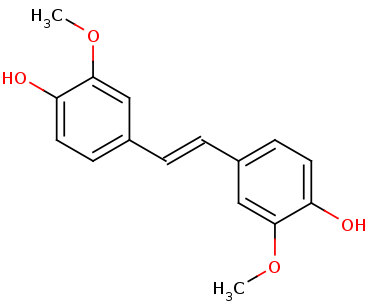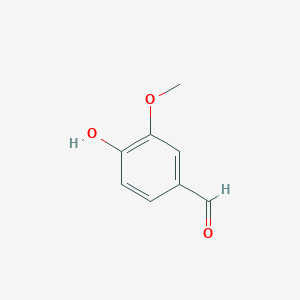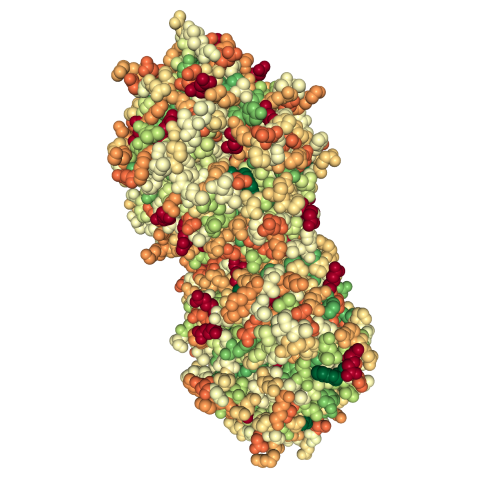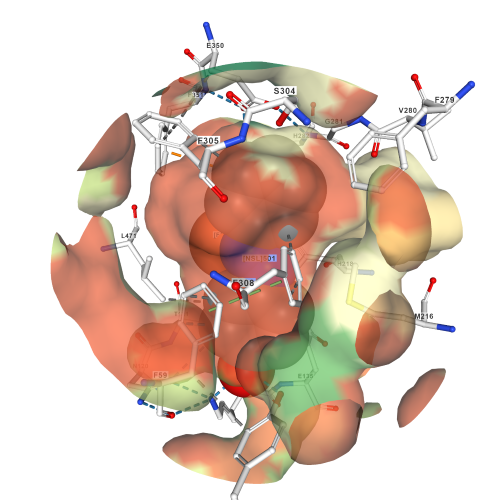Sandbox Reserved 1568
From Proteopedia
(Difference between revisions)
| Line 2: | Line 2: | ||
== '''Lignostilbene-α,ß-dioxygenase A structural features and important functional residues''' == | == '''Lignostilbene-α,ß-dioxygenase A structural features and important functional residues''' == | ||
<StructureSection load='6ojt' size='420' side='right' caption='LsdA phenylazophenol complex' scene=''> | <StructureSection load='6ojt' size='420' side='right' caption='LsdA phenylazophenol complex' scene=''> | ||
| - | You may include any references to papers as in: the use of JSmol in Proteopedia <ref>DOI 10.1002/ijch.201300024</ref> or to the article describing Jmol <ref>PMID:21638687</ref> to the rescue. | ||
== '''Functions and Biological Relevance''' == | == '''Functions and Biological Relevance''' == | ||
| Line 15: | Line 14: | ||
Though lignin is the second most abundant fraction byproduct of lignocellulose, it is currently mostly just combusted for steam and electricity generation. It is rarely valorized into other products like a dispersant for cement and gypsum. One major difficulty in converting and valorizing lignin-based byproducts it their highly variable composition. Both the substrate in which they are located, and the means of extraction affect their end composition and properties. There is much research into finding strong methods of breakdown of lignostilbenoid molecules. | Though lignin is the second most abundant fraction byproduct of lignocellulose, it is currently mostly just combusted for steam and electricity generation. It is rarely valorized into other products like a dispersant for cement and gypsum. One major difficulty in converting and valorizing lignin-based byproducts it their highly variable composition. Both the substrate in which they are located, and the means of extraction affect their end composition and properties. There is much research into finding strong methods of breakdown of lignostilbenoid molecules. | ||
== '''Structural highlights and structure-function relationships''' == | == '''Structural highlights and structure-function relationships''' == | ||
| - | LsdA appears, when crystallized, as two LsdA protomers in one asymmetric unit as a dimer. The <scene name='82/823092/Secondary_and_tertiary_struct/1'>secondary and tertiary structure</scene> of the protomer consists of α-helices (purple) and ß-sheets (blue). The ß-sheets are arranged in a <scene name='82/823092/Seven-bladed_beta_propeller/1'>seven-bladed ß-propeller</scene>, typical of the carotenoid cleavage oxygenases. | + | LsdA appears, when crystallized, as two LsdA protomers in one asymmetric unit as a dimer. The <scene name='82/823092/Secondary_and_tertiary_struct/1'>secondary and tertiary structure</scene> of the protomer consists of α-helices (purple) and ß-sheets (blue). The ß-sheets are arranged in a <scene name='82/823092/Seven-bladed_beta_propeller/1'>seven-bladed ß-propeller</scene>, typical of the carotenoid cleavage oxygenases <ref>PMID 31292192</ref>. |
When you look at the <scene name='82/823092/Spacefill_lsda/1'>spacefill view</scene> of the protein dimer you see that the binding pocket accessibility is very restrictive. | When you look at the <scene name='82/823092/Spacefill_lsda/1'>spacefill view</scene> of the protein dimer you see that the binding pocket accessibility is very restrictive. | ||
| Line 22: | Line 21: | ||
<scene name='82/823092/Hydrophobic_spacefill/1'>Hydrophobicity-focused</scene> view of the protein. | <scene name='82/823092/Hydrophobic_spacefill/1'>Hydrophobicity-focused</scene> view of the protein. | ||
| - | The <scene name='82/823092/Catalytic_triad/2'>catalytic triad</scene> of the binding site consists of Phe59, Tyr101, and Lys134 that interact with the 4-hydroxyphenyl portion of the substrate. The triad importance was tested with specific mutations. A F59H mutation led to 3% efficiency comparable to wildtype LsdA. A Y101F mutation led to 20% efficiency comparable to wildtype LsdA. And a K134M mutation showed no discernible lignostilbene cleavage activity. | + | The <scene name='82/823092/Catalytic_triad/2'>catalytic triad</scene> of the binding site consists of Phe59, Tyr101, and Lys134 that interact with the 4-hydroxyphenyl portion of the substrate. The triad importance was tested with specific mutations. A F59H mutation led to 3% efficiency comparable to wildtype LsdA. A Y101F mutation led to 20% efficiency comparable to wildtype LsdA. And a K134M mutation showed no discernible lignostilbene cleavage activity <ref>PMID 31292192</ref>. |
Important <scene name='82/823092/Active_site_interactions/1'>interactions in the active site</scene> are shown. Green indicates hydrophobic interactions, blue indicates hydrogen bonding interactions, and the orange nucleotides are specific histidines that support and interact with the metal ion (Fe) in the pocket. These two histidines also contribute to hydrogen bonds in the area. | Important <scene name='82/823092/Active_site_interactions/1'>interactions in the active site</scene> are shown. Green indicates hydrophobic interactions, blue indicates hydrogen bonding interactions, and the orange nucleotides are specific histidines that support and interact with the metal ion (Fe) in the pocket. These two histidines also contribute to hydrogen bonds in the area. | ||
Revision as of 23:56, 30 November 2019
| This Sandbox is Reserved from Aug 26 through Dec 12, 2019 for use in the course CHEM 351 Biochemistry taught by Bonnie_Hall at the Grand View University, Des Moines, USA. This reservation includes Sandbox Reserved 1556 through Sandbox Reserved 1575. |
To get started:
More help: Help:Editing |
Lignostilbene-α,ß-dioxygenase A structural features and important functional residues
| |||||||||||
References
- ↑ Kuatsjah E, Verstraete MM, Kobylarz MJ, Liu AKN, Murphy MEP, Eltis LD. Identification of functionally important residues and structural features in a bacterial lignostilbene dioxygenase. J Biol Chem. 2019 Jul 10. pii: RA119.009428. doi: 10.1074/jbc.RA119.009428. PMID:31292192 doi:http://dx.doi.org/10.1074/jbc.RA119.009428
- ↑ Kuatsjah E, Verstraete MM, Kobylarz MJ, Liu AKN, Murphy MEP, Eltis LD. Identification of functionally important residues and structural features in a bacterial lignostilbene dioxygenase. J Biol Chem. 2019 Jul 10. pii: RA119.009428. doi: 10.1074/jbc.RA119.009428. PMID:31292192 doi:http://dx.doi.org/10.1074/jbc.RA119.009428
- ↑ Kuatsjah E, Verstraete MM, Kobylarz MJ, Liu AKN, Murphy MEP, Eltis LD. Identification of functionally important residues and structural features in a bacterial lignostilbene dioxygenase. J Biol Chem. 2019 Jul 10. pii: RA119.009428. doi: 10.1074/jbc.RA119.009428. PMID:31292192 doi:http://dx.doi.org/10.1074/jbc.RA119.009428




